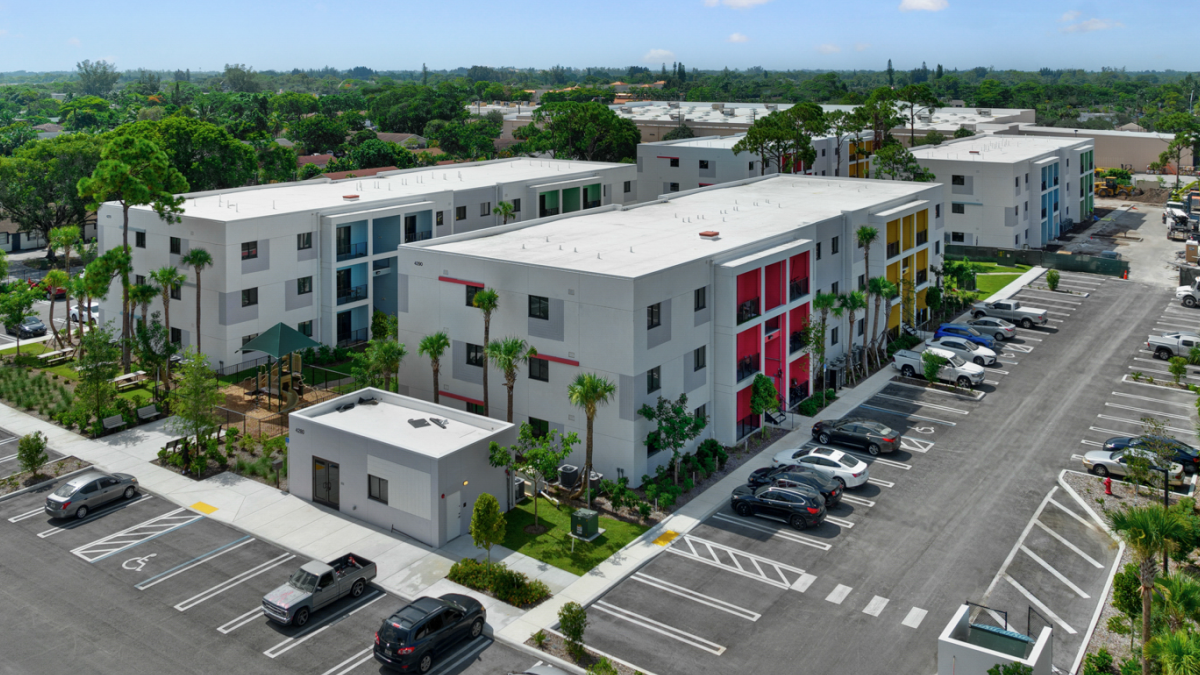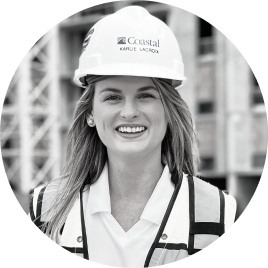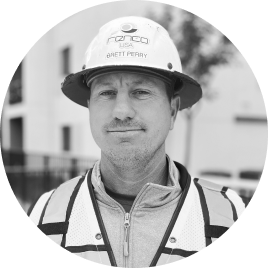08.09.2023 | Fast Company
It Only Took 11 People To Build This Lego-Like Apartment Complex In Florida

With little more than a mallet, a glue gun, and a color-coded instruction manual, a team of 11 unskilled laborers recently built an entire 96-unit apartment building in less than two months.
The key to this super fast building project is its unique new construction material—an interlocking block system that snaps together like Lego bricks. Stacked like conventional cinderblocks and hammered into place, the blocks are a streamlined alternative to constructing buildings out of wood, concrete, and steel.
The material is called Renco, and it’s made of a fully recyclable mix of repurposed glass and plastic, calcite dust, and resin. (The name is a mashup of “renewable” and “composite.”) Similar to fiberglass, the blocks made of this composite have high strength and stability, and are able to withstand a wide range of environmental forces. First developed in Turkey and used there in more than 100 building projects since 2012, the material has now been licensed and approved for construction in the U.S. The 96-unit apartment building, located in Palm Springs, Florida, is the first building in the U.S. to use Renco. Compared to a conventional project built with concrete, the complex was built 20% faster and 20% cheaper.
The project was developed and constructed by Coastal Construction, a general contractor based in South Florida that specializes in high rise housing and hotels. Patrick Murphy is the company’s executive vice president, and he says he first learned about Renco in 2010 and immediately saw its potential as a sturdy building material that could withstand Florida’s hurricanes. Along with his father, Coastal Construction founder, Tom Murphy Jr., he flew out to Turkey to see the material up close.
The first project they visited was a huge apartment complex. “We said, ‘holy cow.’ It’s one thing to build a house or a little storage facility,” Murphy says. “It’s another to build a multi-story apartment building with people living in it.”
They made a deal with Renco’s creator and brought the material back to the U.S. with the intention of setting up a facility to build the blocks and then using those blocks to build hurricane-proof housing across Florida.
“We thought, hey, we’re in construction, we do this all the time. It’ll take two or three years to get it approved. Well, it ended up taking about 10 years,” says Murphy, a former two-term Congressman. “That’s not because there’s anything wrong with the product or any deficiencies. It was really because of the bureaucracy of the system itself.”
The company performed more than 400 tests of the material to ensure its structural integrity, safety from off-gassing and other environmental hazards. They also tested against termite and pest infestations, mold, earthquakes, and, this being Florida, hurricanes. The material is rated to withstand a Category 5 storm.
Its biggest advantage, though, is likely its ease of construction. The system was designed to be easily assembled by people who aren’t trained in construction, of which there is currently a huge shortage. Color-coded instructions show builders which blocks go where, and they are easily attached to one another with a spray of two-part methyl methacrylate industrial adhesive from a glue gun and a few taps of a mallet. Blocks range in size from two inches to 42 inches long. The heaviest is 80 pounds, but most can be lifted by a single person. For the Palm Springs apartment complex, the entire four-building project relied on just 22 block shapes.
That may sound like a recipe for a boring box, but the system is surprisingly adaptable to different designs, according to the project’s architect, Arquitectonica. “For the first one we were being cautious,” says Bernardo Fort-Brescia, the firm’s co-founder. “Now I realize we can be even more radical.”
“You can put any facade on top of it,” says Murphy. “It can look, at the end of the day, like a five-star hotel, or it can be workforce housing, or anything in the middle.”
Murphy hopes to build all those types of buildings and more. Coastal Construction has just completed a production facility in Florida for producing Renco blocks, and he says it has capacity to produce enough of the material to build 5,000 apartment units a year. The company is in talks with developers around the country for a wide range of new projects using this building system. “I’m not saying we can build everything in the world but we haven’t been stumped yet,” says Murphy.









